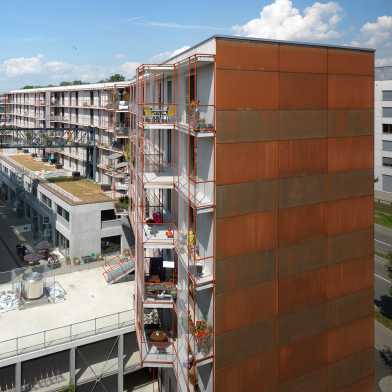News & Events
New study on densification and displacement in the five largest Swiss agglomerations
In the study “Urban densification and displacement in Switzerland”, Fiona Kauer, Elena Lutz, Dominic Büttiker, and David Kaufmann, commissioned by the Federal Office for Housing (BWO), examine how residential construction activity in the five largest Swiss agglomerations - Basel, Bern, Geneva, Lausanne, and Zurich - contributes to densification and what social effects are associated with it.
“Vertical extensions of buildings are becoming a key option for urban redevelopment”

Why are more new housing units being constructed in Geneva each year, while Zurich is seeing a decline? Why are older residential buildings in Basel, Geneva and Lausanne being vertically extended, while they are being demolished and replaced in Zurich? ETH researchers provide new answers to the role of housing construction and its social impact.
Alina Bärnthaler joins the SPUR-team as PhD Candidate
In June 2025, Alina Bärnthaler joined the Spatial Development and Urban Policy (SPUR) Research Group of Prof. Dr. David Kaufmann at ETH Zurich.
Dr. Dasha Kuletskaya joins the SPUR team
Dr. Dasha Kuletskaya will join SPUR as a Visiting Postdoctoral Fellow from May 2025 to April 2027 to work on an interdisciplinary research project “The Power of Fiction: Unravelling the Social Construction of the Economic Value of Real Estate,” funded by the IDEA League and DAAD Prime Fellowships.
